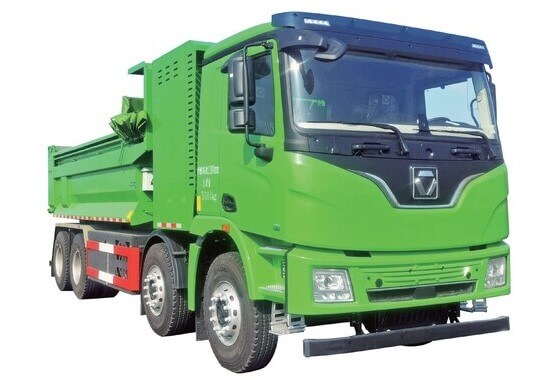XCMG Machinery has introduced a new hydrogen fuel cell dump truck model, the EHSL552F, equipped with a 120 kW hydrogen fuel cell and high-power battery system. This launch marks a significant step in reducing greenhouse gas emissions by 99.3 kilograms daily for large-scale transportation projects.
To meet the demand for long-distance operational capabilities, XCMG’s latest hydrogen-powered vehicle integrates advanced technology with robust performance features. The EHSL552F model includes a fast six-speed gearbox and offers substantial chassis clearance, enabling it to easily navigate steep slopes.
The vehicle’s design incorporates computer-aided topology optimization, along with new materials and processes that reduce the vehicle weight by 200 kg without compromising structural strength or reliability. Additionally, the EHSL552F is designed for reduced maintenance costs within its lifespan of over 1.5 million kilometers.
By integrating optimized algorithms for smoothness and stability into the design process, XCMG has enhanced both the driving comfort and handling stability of the vehicle. This makes it easier for logistics companies to adopt more sustainable models.
The upgraded cabin features both interior enhancements for driver comfort and an exterior design that commands presence on the road. The electrical architecture of the vehicle has been revamped to improve intelligent driving aids and overall reliability, while ensuring safety through compliance with the European Union ECE R29 crash regulation.
Since 2021, XCMG has been researching and manufacturing hydrogen energy equipment, culminating in the creation of the Shanghai Hydrogen Energy Technology Research Institute in April 2022. The company has unveiled 16 different hydrogen energy equipment models, covering various sectors, including tractors, dump trucks and sanitation truck chassis.
Recently in collaboration with REFIRE, XCMG’s newly developed 49T fuel cell smart heavy trucks, powered by REFIRE’s proprietary Mirror Star series fuel cells, began operations in northwest China, serving green transportation needs within local green electricity production from coal projects.





